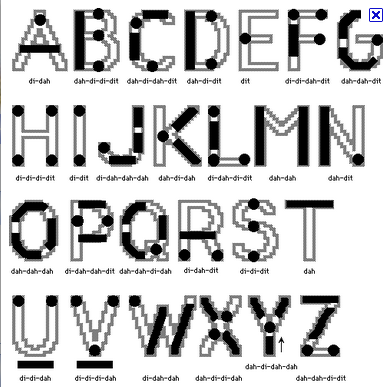It truly baffles me why people are searching the internet for Morse Code related searches. I see people searching for particular Morse Code strings ALL the time!
With that said, I’m going to go ahead and translate some of the most commonly typed Morse Code translations on the web. Here they are!
1. .– . / — .- .. .-.. . -.
This translates to “we mailen.” What the heck does that mean? I can only assume a few things from this – either the people who type this have miss spelled something, or perhaps its a different language. Does anyone have any ideas to help me out?
2. …. . .-.. .–. / — . / .–. .-.. . .- … .
Yeah, this Morse Code search query is pretty odd – and a wee bit creepy. This Morse Code string translates into, “Help Me Please.” With that said, its a little scary – are people just practicing Morse Code because they may need it in the future? I’m not entirely sure. Anyone want to chime in here?
3. …..-….
This is complete gyberish. Nothing at all is in this Morse Code string. Fools ![]()
4. …- .- .- .-. .– . .-..
Here’s another interesting one. This Morse Code string is actually translated to, “Vaarwel”, which I had no clue was even a word until now. After a quick Google search, I discovered that “Vaarwel” actually means, “Goodbye” or “Farewell.” It seems to be a dutch word. Why people are typing this via Morse Code, I’ll never know.
5. .. .- — .- .-.. .. …- .
This is “I am alive” in Morse Code. Woot woot, I’m alive too!!!!
6. …. . .-.. .-..
What the hell? Hehe, OK, pun intended. This means, “Hell”, but I’m sure people were looking for …. . .-.. .-.. — which is, “Hello.”
